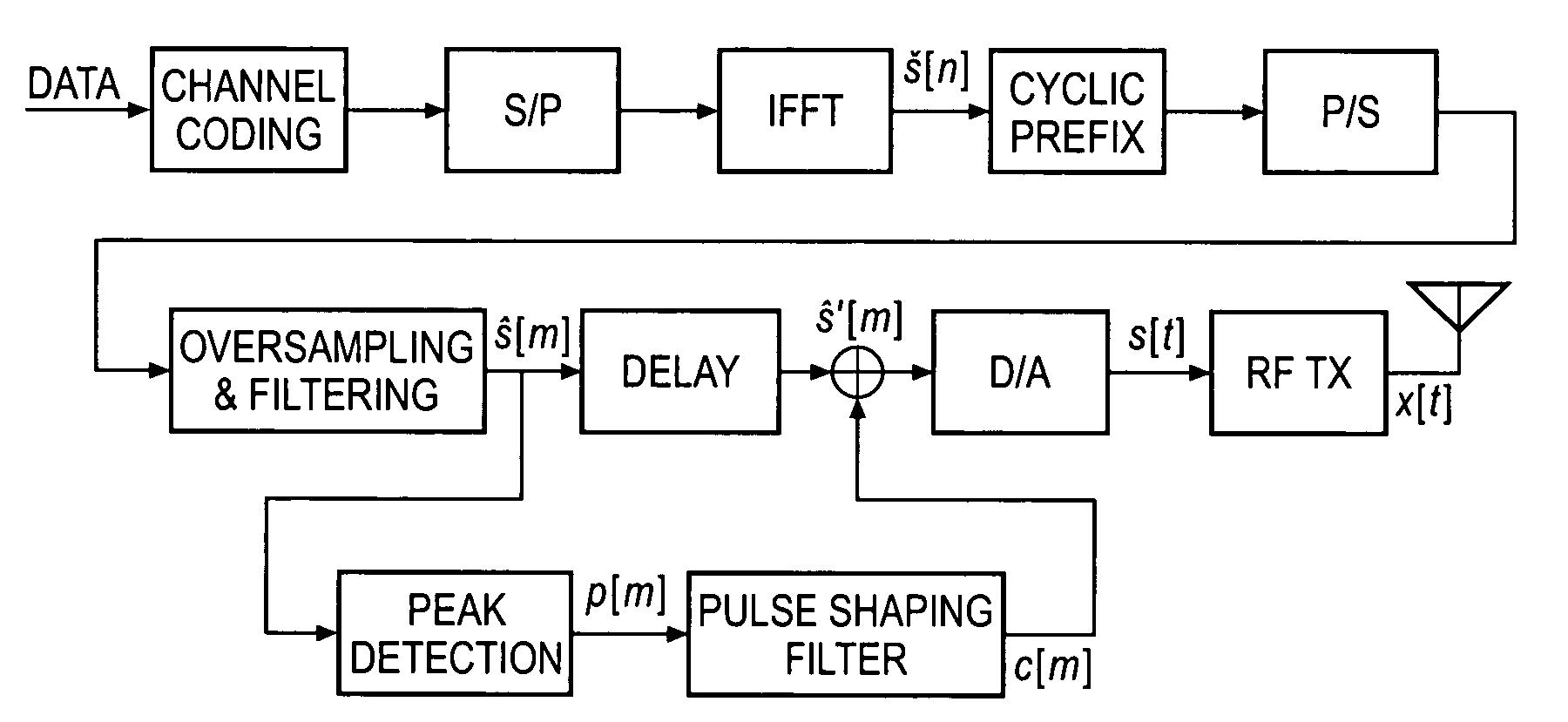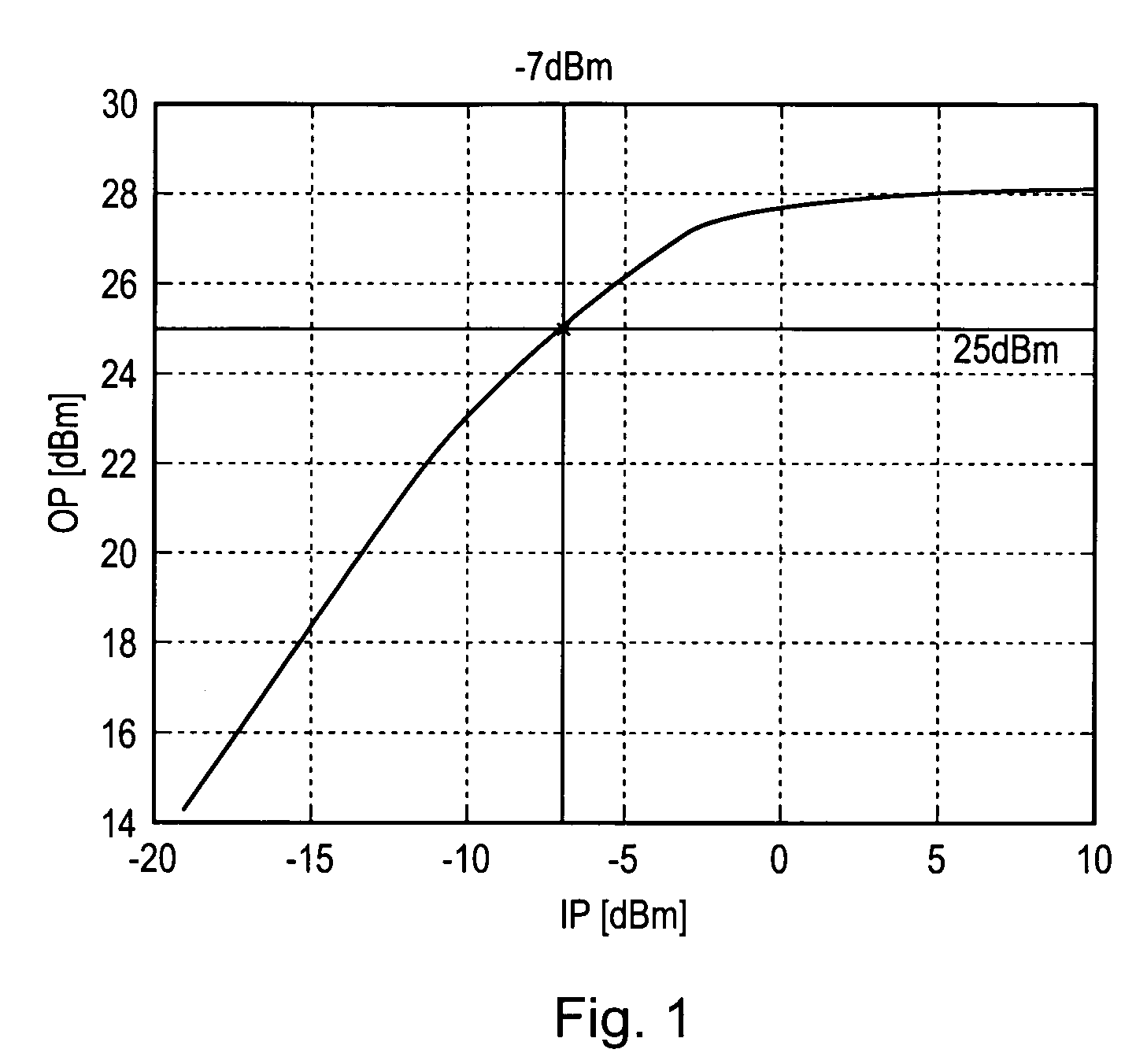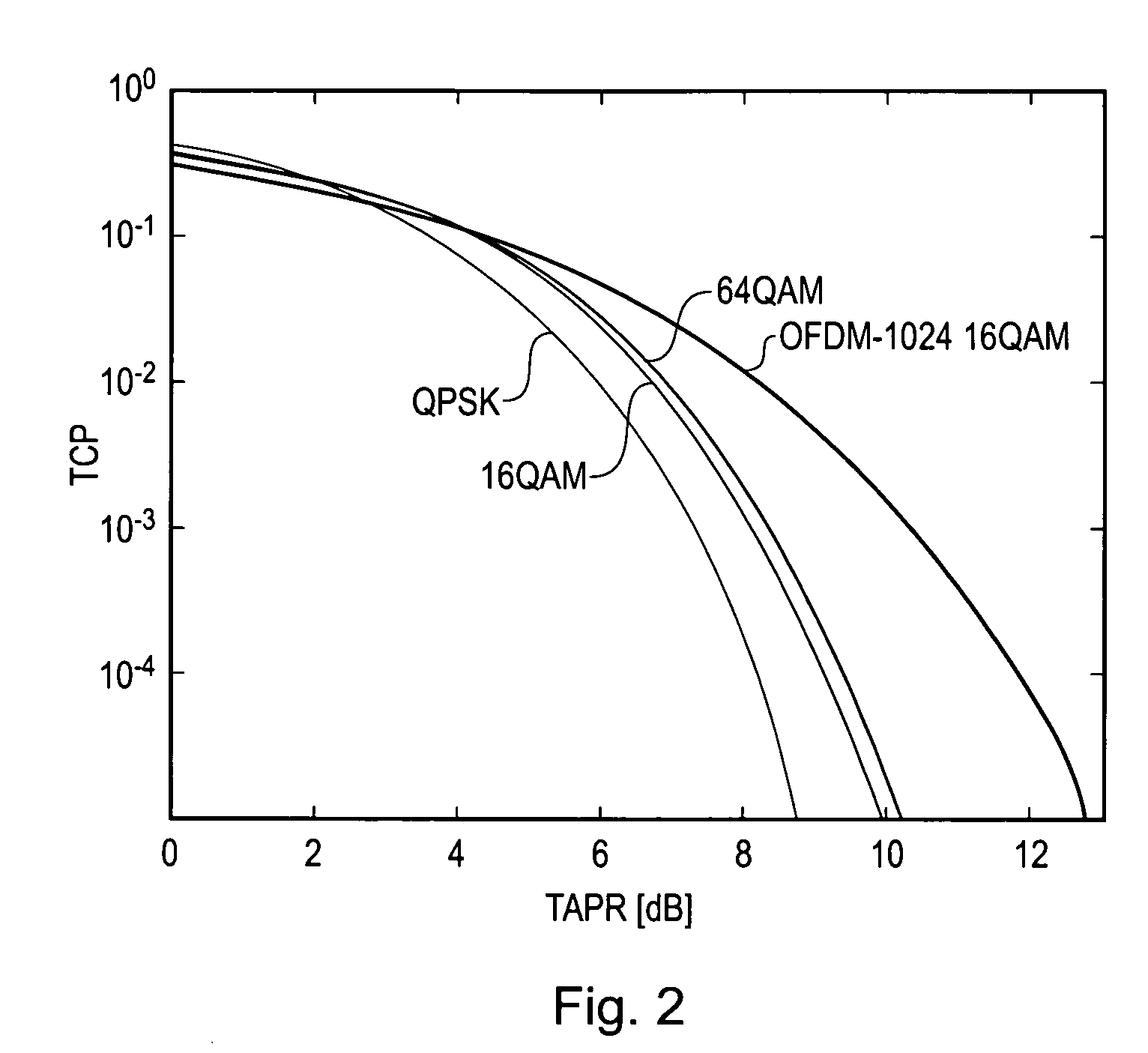Method and apparatus of peak-to-average power ratio reduction
a technology of peak-to-average power and equipment, applied in the direction of modulated carrier systems, transmission, transmitter/receiver shaping networks, etc., can solve the problems of limited use of these systems, low power-efficiency, and relatively high implementation costs, and achieve the effect of reducing the peak-to-average power ratio
- Summary
- Abstract
- Description
- Claims
- Application Information
AI Technical Summary
Benefits of technology
Problems solved by technology
Method used
Image
Examples
application example
[0096]Let us now consider a practical application of the proposed PAPR reduction technique in the context of the Pan-European terrestrial video broadcast system known as DVB-T [33]. The corresponding system parameters are summarized in Table 2.
[0097]Table 2: DVB-T system parameters [33].
[0098]
Mode2 KChannel bandwidth6MHzNumber of carriers K1705OFDM symbol duration TU298.667μSCarrier spacing 1 / TU3.3482kHzEffective bandwidth (K − 1) / TU5.71MHz
[0099]The out-of-band emission requirements for this application are imposed by the Federal Communications Commission (FCC) defined [30] spectral mask, which can be seen in FIG. 5. (The original out-of-band emission specifications for DVB-T are defined by the ETSI [33], however we used the closely-related FCC spectral mask [30], which is somewhat more stringent.)
[0100]A standard RF PA back-off of 12 dB was defined by the DVB-T specifications, which allows the transmission of the DVB-T OFDM signal without violation of the FCC spectral mask. On the ...
PUM
 Login to View More
Login to View More Abstract
Description
Claims
Application Information
 Login to View More
Login to View More - R&D
- Intellectual Property
- Life Sciences
- Materials
- Tech Scout
- Unparalleled Data Quality
- Higher Quality Content
- 60% Fewer Hallucinations
Browse by: Latest US Patents, China's latest patents, Technical Efficacy Thesaurus, Application Domain, Technology Topic, Popular Technical Reports.
© 2025 PatSnap. All rights reserved.Legal|Privacy policy|Modern Slavery Act Transparency Statement|Sitemap|About US| Contact US: help@patsnap.com



